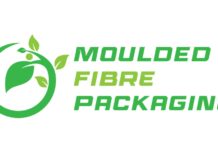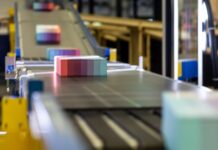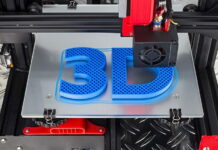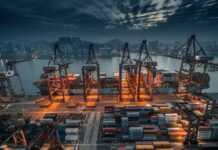Emerging Trends in Connected Packaging
As a result of the development of linked packaging, the packaging sector is going through a period of substantial transition. Through the incorporation of digital components into physical packaging, organizations discover novel approaches to connect customers, enhance the effectiveness of their supply chain, and guarantee the authenticity of their products. An examination of the most important developments and trends that will shape the future of linked packaging is presented in this article.
The use of QR Codes and Smart Labels
It is becoming more common for smart labels and QR codes to be considered crucial components within the area of connected packaging. When consumers utilize these technologies, they are able to access a vast quantity of information about a product by just scanning a code with their mobile devices. This allows customers to make more informed purchasing decisions. It is possible to transmit information such as nutritional facts and promotional offers via the use of QR codes, which bridge the gap between the digital and physical worlds. It is projected that there will be a rise in the use of smart labels as a consequence of the rising need among consumers for information that is not just open and accessible but also transparent.
AR Experiences, also known as Augmented Reality
Augmented reality (AR) is drastically altering the manner in which customers engage with the things they purchase. Brands are able to provide customers with immersive experiences that fascinate and engage them via the usage of augmented reality (AR) packaging. By way of illustration, a cereal box might become far more than that if it were to have animated characters or games that could be watched via an application on a smartphone. This improves the whole experience for the customer and generates memorable encounters with the company, which may lead to increased customer loyalty and word-of-mouth marketing.
The technologies of NFC and RFID
The technologies of Near Field Communication (NFC) and Radio Frequency Identification (RFID) are bringing about a breakthrough in the management of inventories and the implementation of anti-counterfeiting measures. Consumers are able to check the legitimacy of a product by just tapping their smartphone. This is made possible by NFC tags that are inserted in the packaging. On the supply chain side, RFID tags make it possible to trace items in real time, which improves inventory accuracy and reduces losses. While the prices of these technologies continue to fall, there is a good chance that their implementation will increase across a variety of different businesses.
Sustainability and linked packaging are both important.
One of the most important factors driving the packaging business is sustainability, and linked packaging is not an exception to this rule. Brands are investigating the ways in which technology may be used to encourage environmentally responsible habits. As an instance, customers may be provided with information on how to recycle or dispose of the packaging in a responsible manner via the use of smart packaging. Additionally, linked packaging has the ability to check freshness and notify customers when a product is getting close to its expiry date, which means that it can track and decrease the amount of food that is wasted. It is anticipated that people who are concerned about the environment would respond positively to this confluence of technology and sustainability.
Personalization and Insights Provided to Customers
Packages that are coupled to one another provide opportunities for customisation that cannot be matched by any other approach. Companies are able to tailor their marketing efforts to the unique requirements of individual clients by making use of the data that is acquired via the use of smart packaging. As a consequence of the fact that it is feasible to deliver tailored messages, product ideas, and special offers directly to a client’s device, the shopping experience that the customer has is able to become more engaging and personal. Connected packaging also provides substantial insights into the behavior of customers, which enables companies to adjust their plans and produce products that are more suited to fulfill the expectations of consumers. This is made possible by the data that is provided by connected packaging.
For the Purposes of Transparency and Traceability Blockchain
The blockchain technology is now being included into connected packaging with the intention of boosting the level of transparency and traceability across the supply chain. Companies are able to provide consumers with a detailed history of the journey that a product takes from the farm to the table by using blockchain technology. To achieve this goal, it is necessary to keep a record of each and every transaction and movement of the commodity. In industries such as food and pharmaceuticals, where quality and safety are of the highest importance, this level of transparency helps to establish trust and assures the validity of products. This is especially important in the agricultural industry.
Final Thoughts
Packaging that is linked to the internet has a promising and promising future ahead of it. As a result of the ongoing development of technology, the manner in which businesses communicate with their customers via their packaging will likewise undergo transformations. There are a number of ways in which linked packaging is going to transform the packaging sector. These include the incorporation of blockchain technology, smart labeling, and augmented reality experiences. Through the use of these technologies, companies have the potential to increase the level of interaction with their customers, boost the efficiency of their supply chains, and promote sustainability, eventually leading to a world that is more connected and informed.
The concept of connected packaging is not only a passing fad; rather, it represents the future of how we will engage with things. It will combine the digital and physical worlds in ways that we have only just started to understand. The continued development of this industry will undoubtedly result in the opening of new doors of opportunity for both products and customers.




























